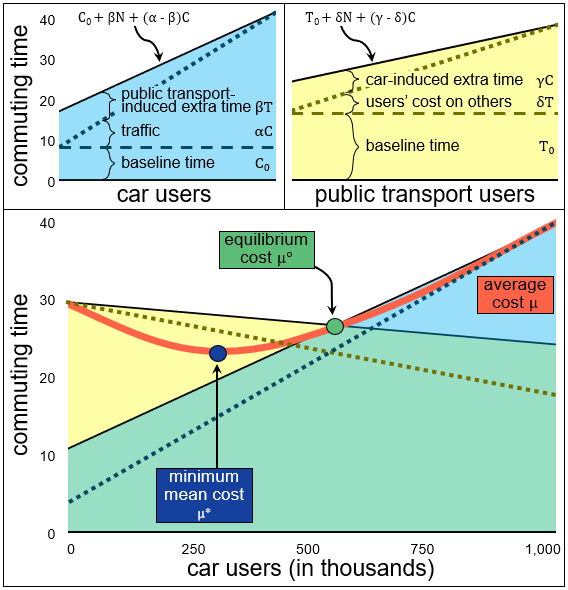Promoting walking or cycling and reducing cars’ use is one of the city planners’ main targets, contributing to a sustainable transport method. Yet, the number of vehicles worldwide is increasing as fast as the population, and motorized mobility has become the primary transport method in most cities. Here, we consider modal share as an emergent behaviour of personal decisions. All individuals minimize their commuting time and reach an equilibrium under which no person is willing to change their transportation mode. In terms of the minimum travel time, the best-case scenario is used to determine the extra commuting time and the excess cars, computed as a social inefficiency. Results show that commuting times could increase up to 25% with many more vehicles than optimum. Paradoxically, all individuals trying to minimize their time could collectively reach the maximum commuting times in the extreme case, with all individuals driving during rush hour.
https://royalsocietypublishing.org/doi/10.1098/rsos.201808
In the media
https://gizmodo.com/why-cities-should-ban-cars-according-to-science-1847161114
https://es.paperblog.com/las-ciudades-deben-eliminar-la-presencia-de-automoviles-para-sobrevivir-6628496/
https://www.futuroprossimo.it/2021/07/citta-del-futuro-via-le-auto-se-vogliono-sopravvivere/
https://www.inovacaotecnologica.com.br/noticias/noticia.php?artigo=cidades-precisam-dispensar-carros-sobreviver&id=010125210628#.YOXKF-gzbIU
https://phys.org/news/2021-06-cities-car-free-survive.html
